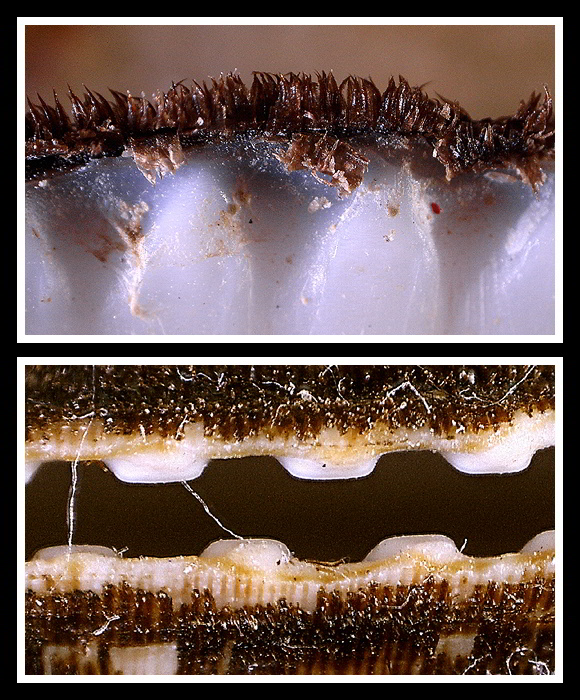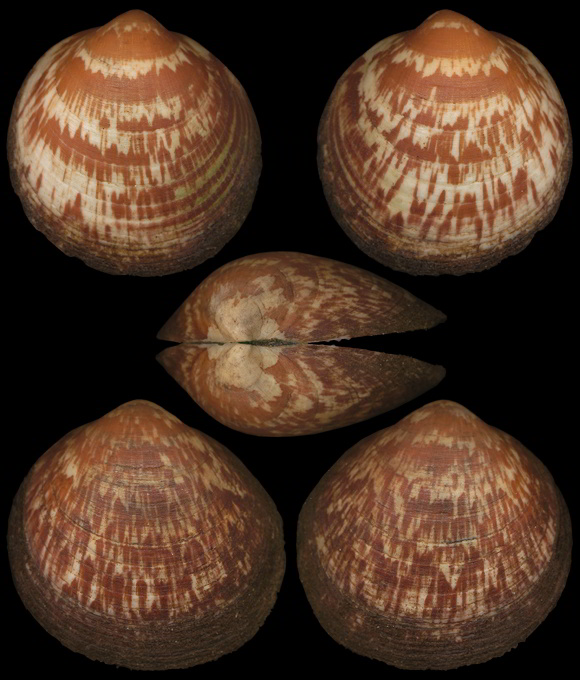
Norway & Baltic, Brittany (common) to Canarias; Madeira and atlantic seamounts to central Mediterranean (uncommon). In rough sand and gravel, « especially in areas of high current » (MBSBI) from lower intertidal down to 100m deep, but found deeper (90-180m) on Gorringe Bank. In Atlantic, the species is mainly dredged at about -20m. Original taxon: Arca glycymeris.
Synonyms: lineatus, orbicularis, punctatus.
A pair dredged off Tanger, N. Morocco. 45-50mm.
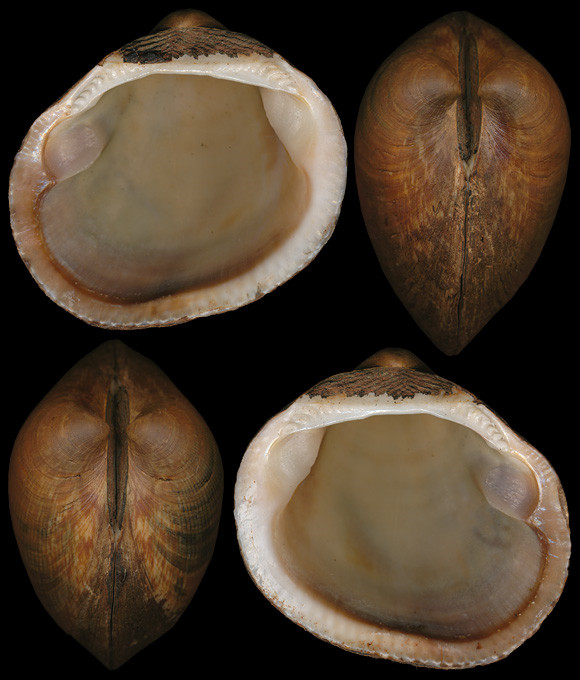
The word γλυχυμαρίς refers to a kind of oyster (chemae glycymarides PLIN, XXXII, 147).
In this species, the marginal crenation are less numerous than in pilosa, and do not extend over the sides as high as in the latter. Often, they disappear at the level of the muscle scars, while they continue to be detected much closer to the hinge line in pilosa. – Gerontic, Caorle, Veneto, NE. Italy. 84,8mm.
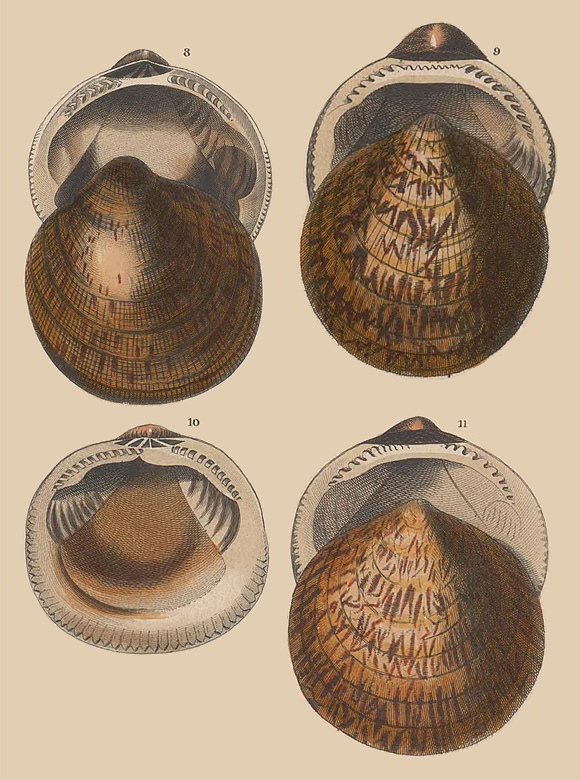
Pectunculus glycimeris (8-9) in T. Brown: Illustrations of the recent conchology of Great Britain and Ireland, London 1844. The author shows also a “Pectunculus pilosus” (10-11) from the same region. But the pattern of this pilosus does not match the usual outfit of mediterranean pilosa. Also, this shell has the density of marginal crenations that is typical of glycymeris, while the glycymeris of this drawing has the fine and numerous crenations of pilosa. Obviously, this picture is not reliable, either it shows some variations of glycymeris only (and in this case there was no need to mention a “pilosa”), or in tries of enlight the differences between glycymeris and a local form of pilosa (unfortunately merging the distinctive features); but it gives, however, an information: there was a time when, in British Isles, local conchologists saw dog-cockles different enough of pure glycymeris to be named “pilosa”.
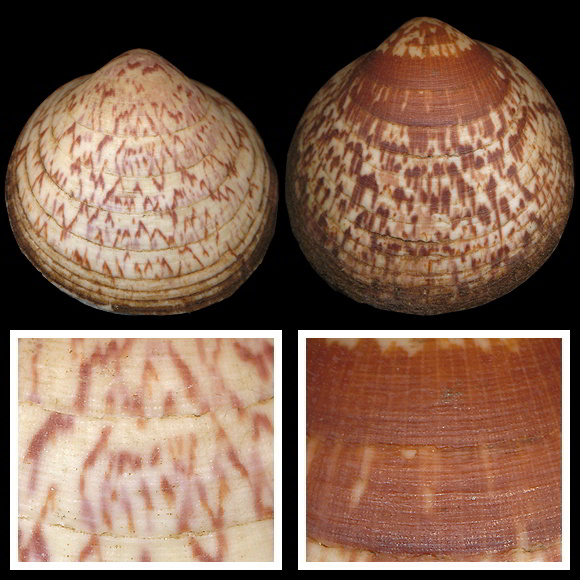
Brown gives the following description for P. glycymeris: « Shell orbicular, convex, thick, strong ; umbones distant, round, and pointing towards each other ; hinge line with a polygonal area of a deep brown colour, but not striate ; whole surface of a pale yellowish-white, with nearly obsolete, wide-set, longitudinal, and transverse striae, irregularly and remotely spotted with yellowish-brown ; covered with a dark, subpilous epidermis ; margin strongly crenated, and acute at the edge ; cardinal teeth transverse, about ten in number. »
Arcachon Basin, SW. France. 42-46mm.
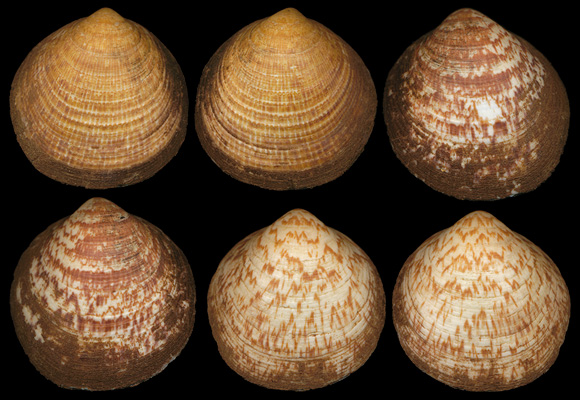
Specimens trawled on mud at 20-25m deep in the Gulf of Morbihan, S. Brittany, NW. France. 50-54mm.
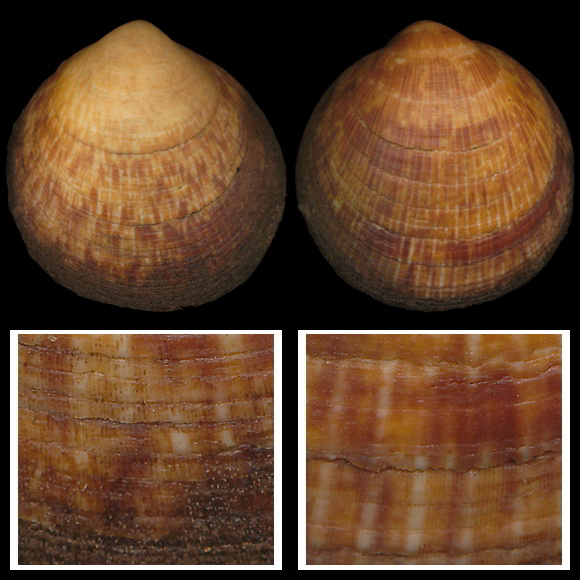
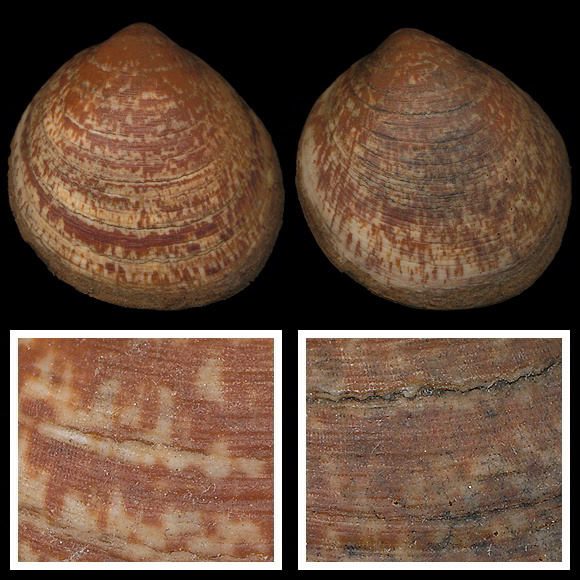
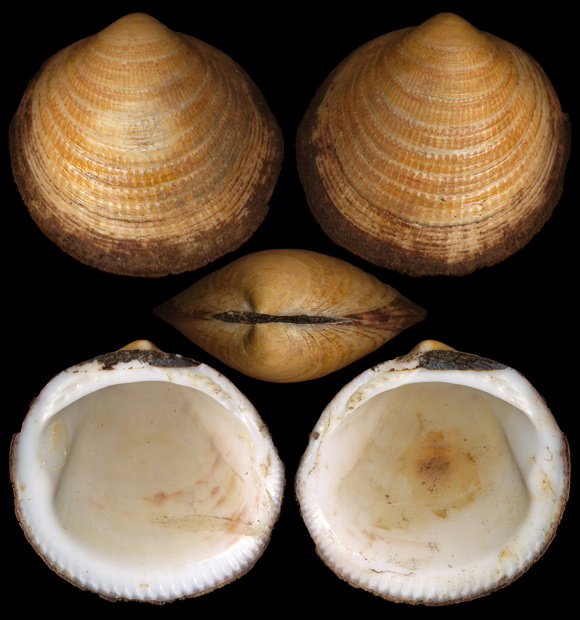
A bimaculata-like specimen dredged off Bertheaume Cove, west of Brest, Finistère, W. Brittany, NW. France. Size: 63mm. The occurring of a bimaculata so far in the north could not be linked to something else that human transportation. The larval stage duration can be, indeed, linked to the sea-temperature: cold conditions allow a longer larval stage, while warmer temperatures « stimulate metabolism and growth and, hence, allow larvae to metamorphose faster and to escape pelagic predation and dispersion (Loosanoff & al. 1951, Dickie 1955) » (Menesguen & Dreves, 1987). This could explain why G. bimaculata is confined into the Mediterranean Sea: the local high temperatures of the water do not allow the species to escape, and the only stream that goes out of the Mediterranean via Gibraltar sinks into bathyal depths as soon as it enters in the Atlantic. In fact, even if this specimen looks like bimaculata, it cannot belong to this species: the umbones are not orthogyre as they must be in bimaculata.
